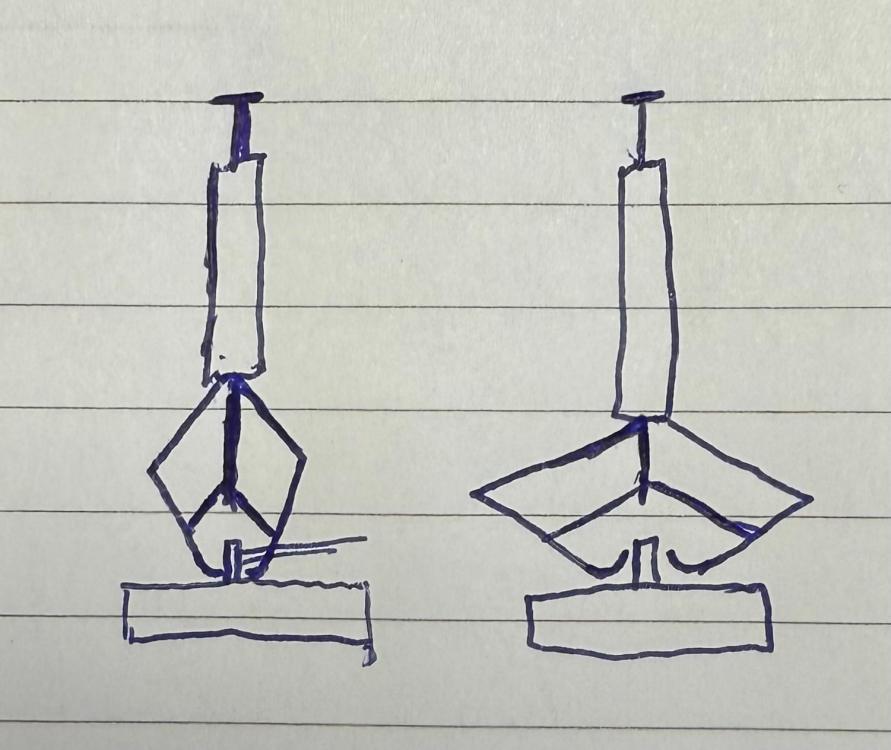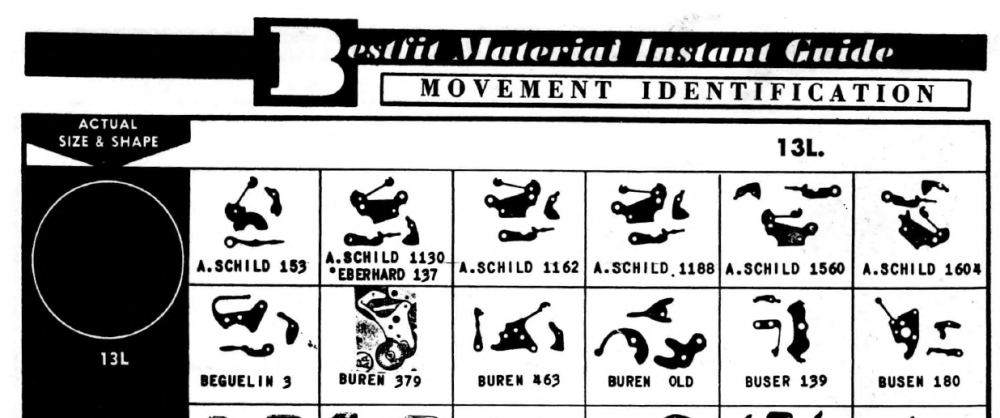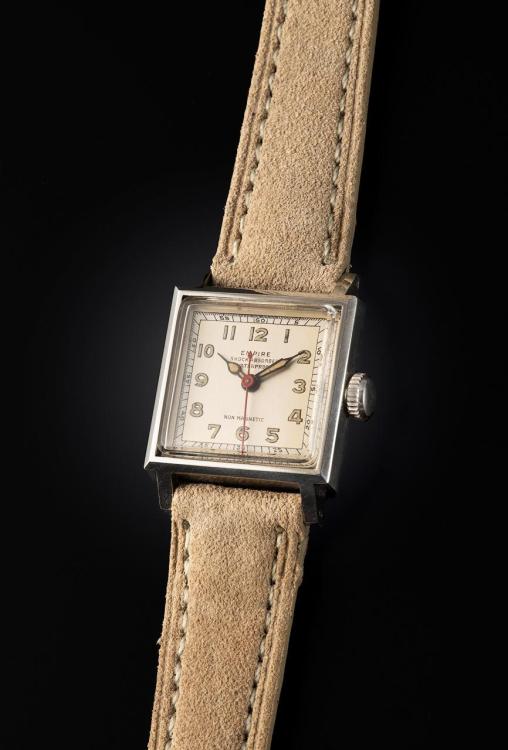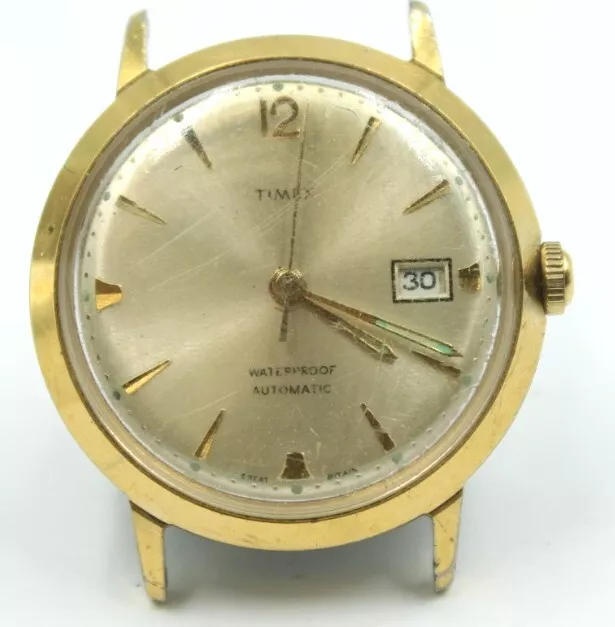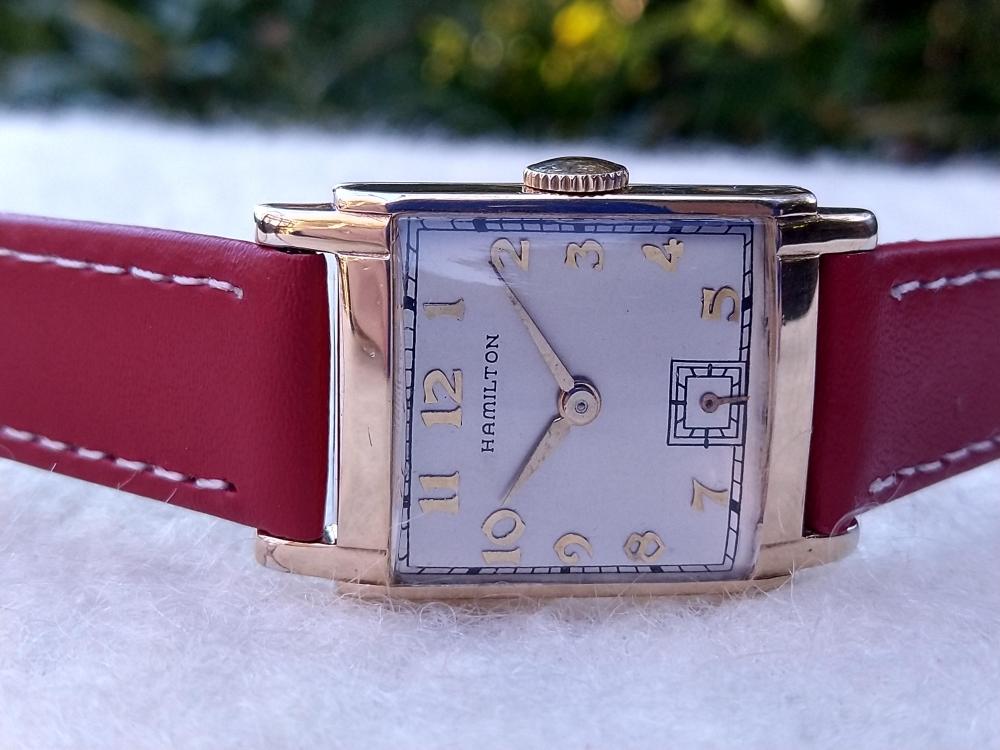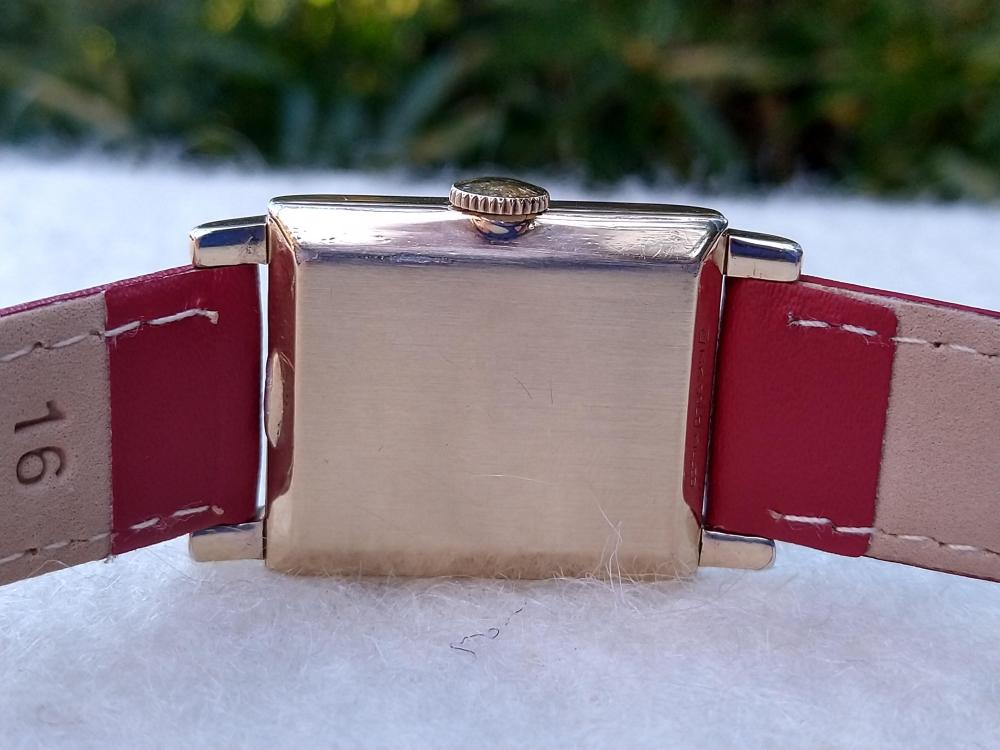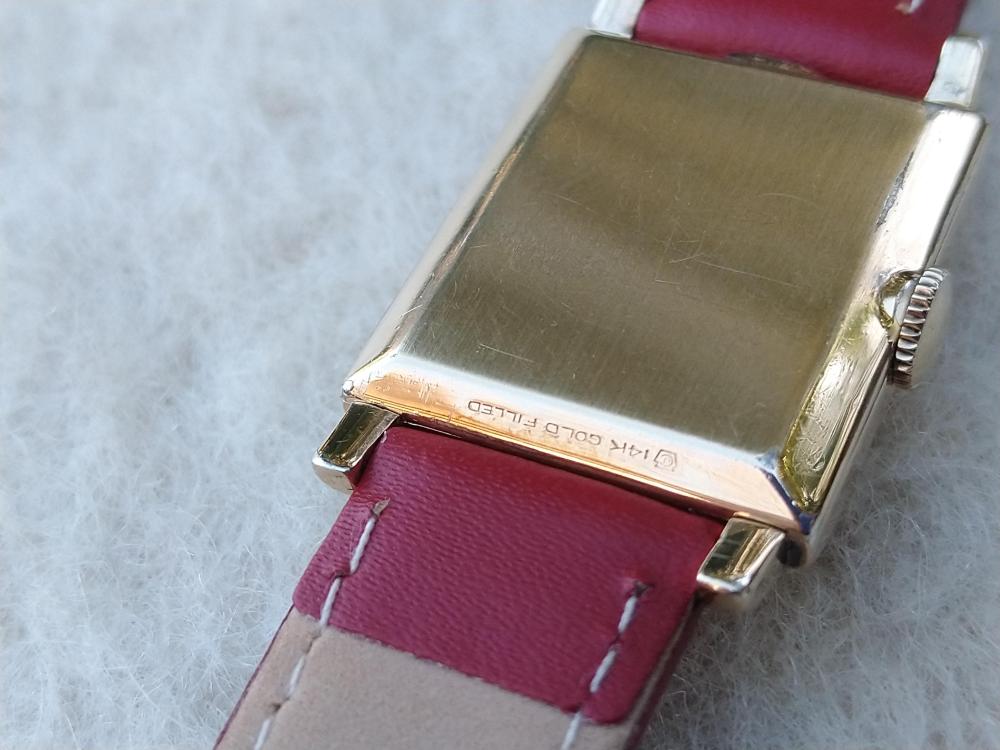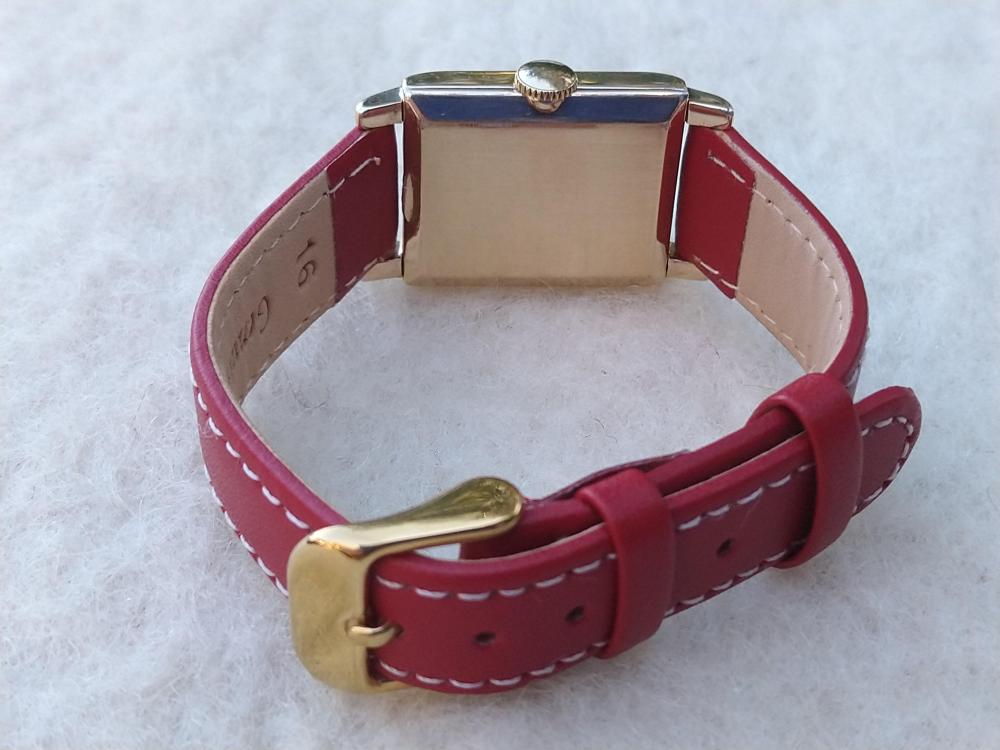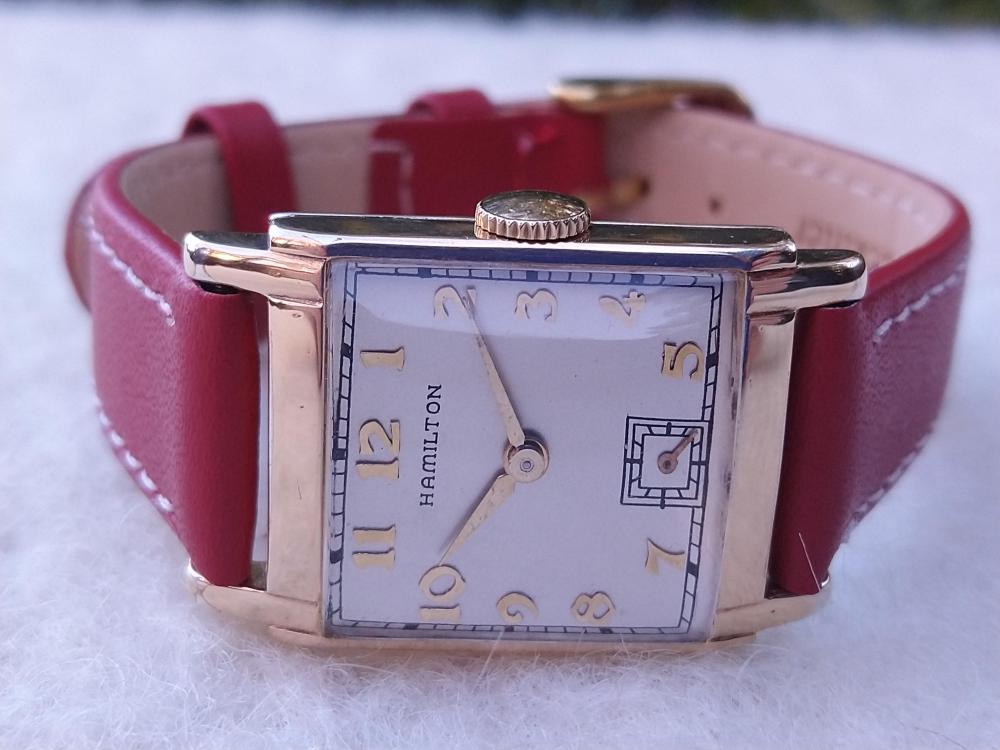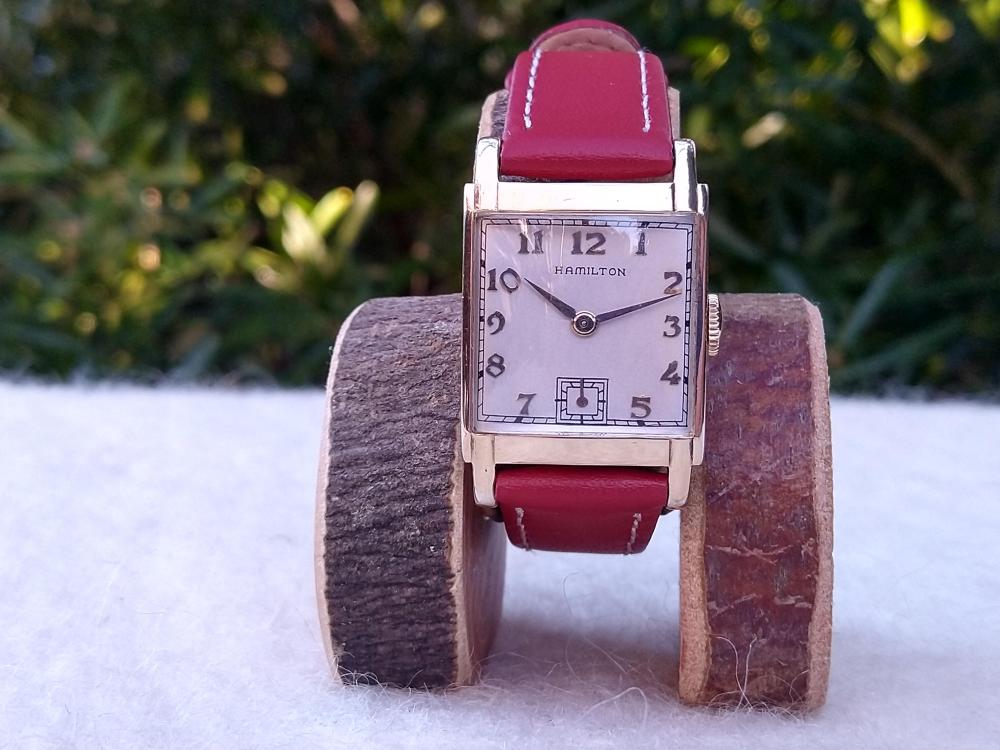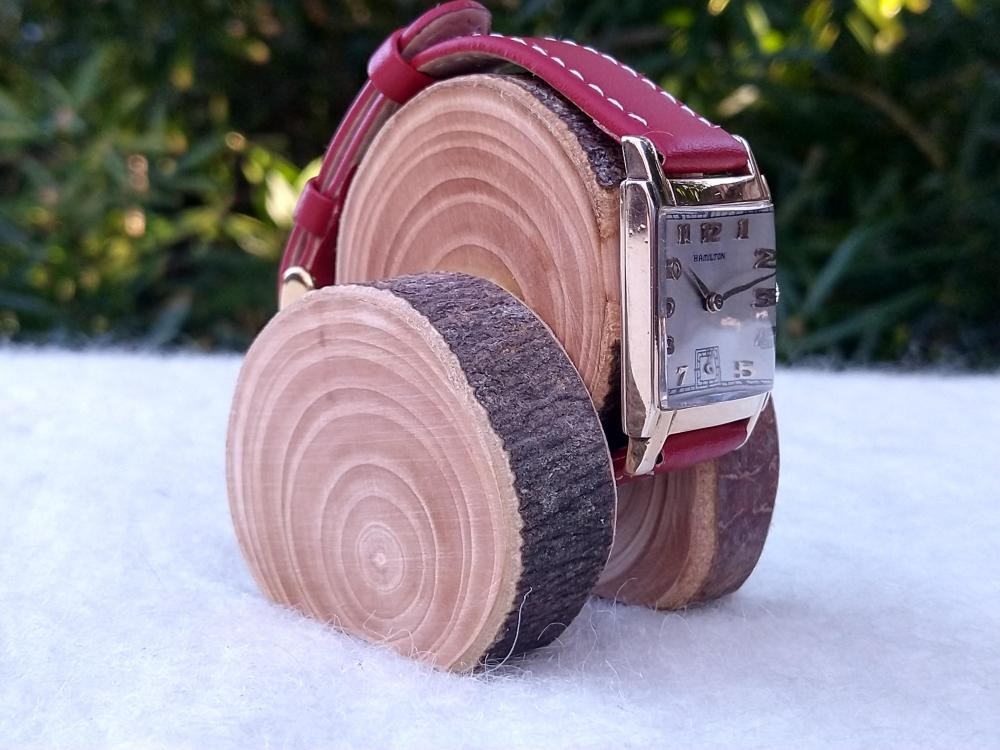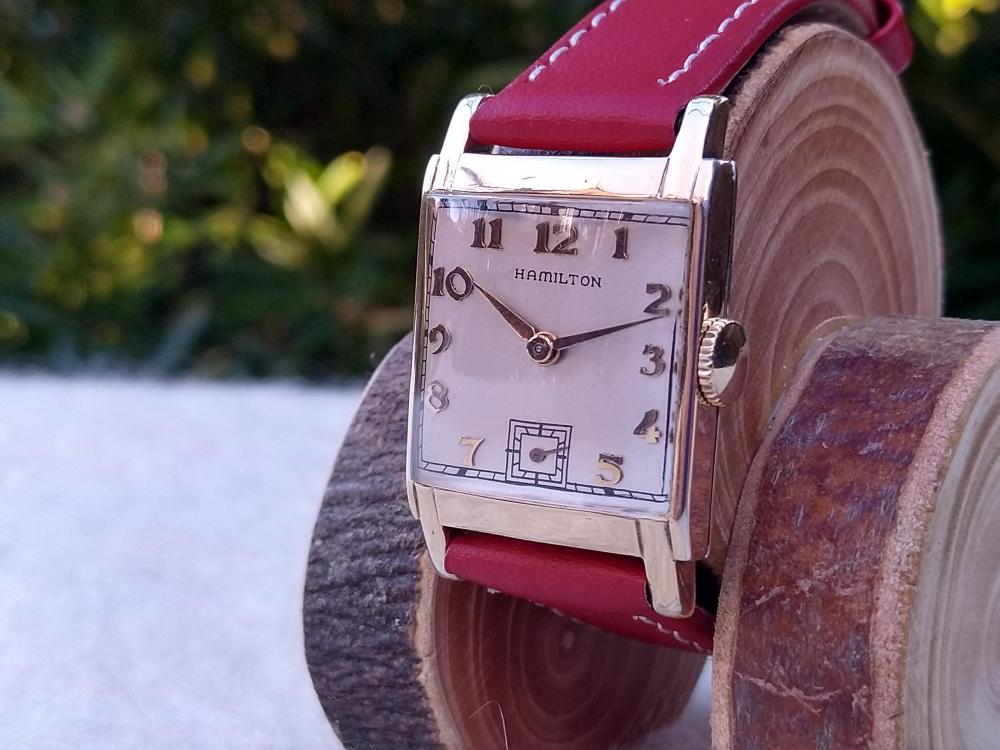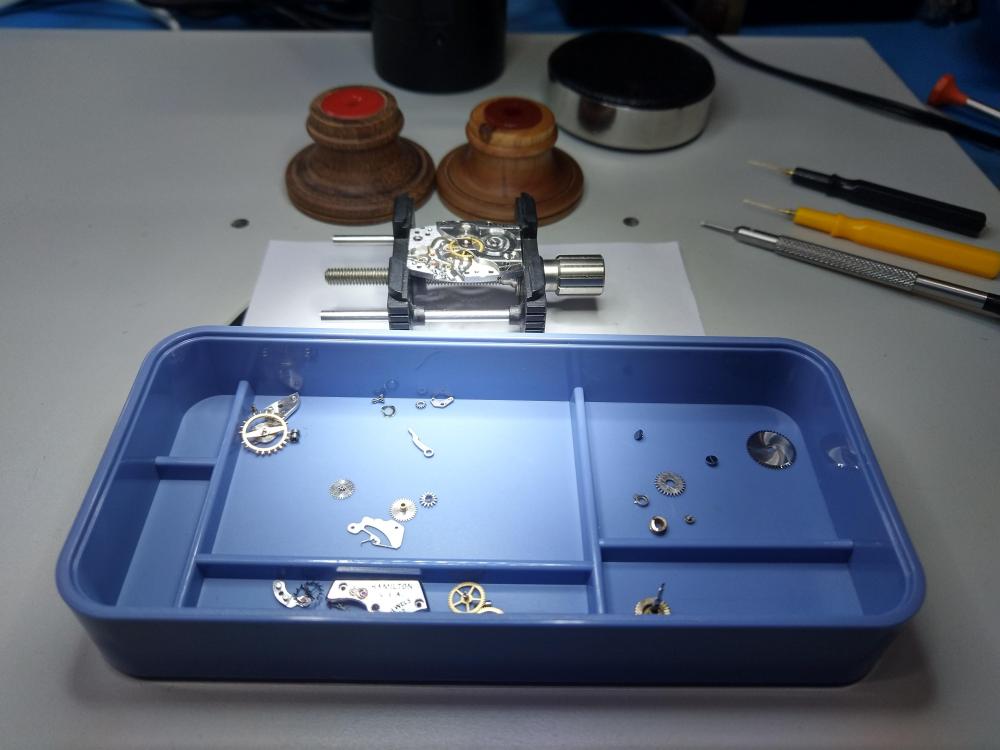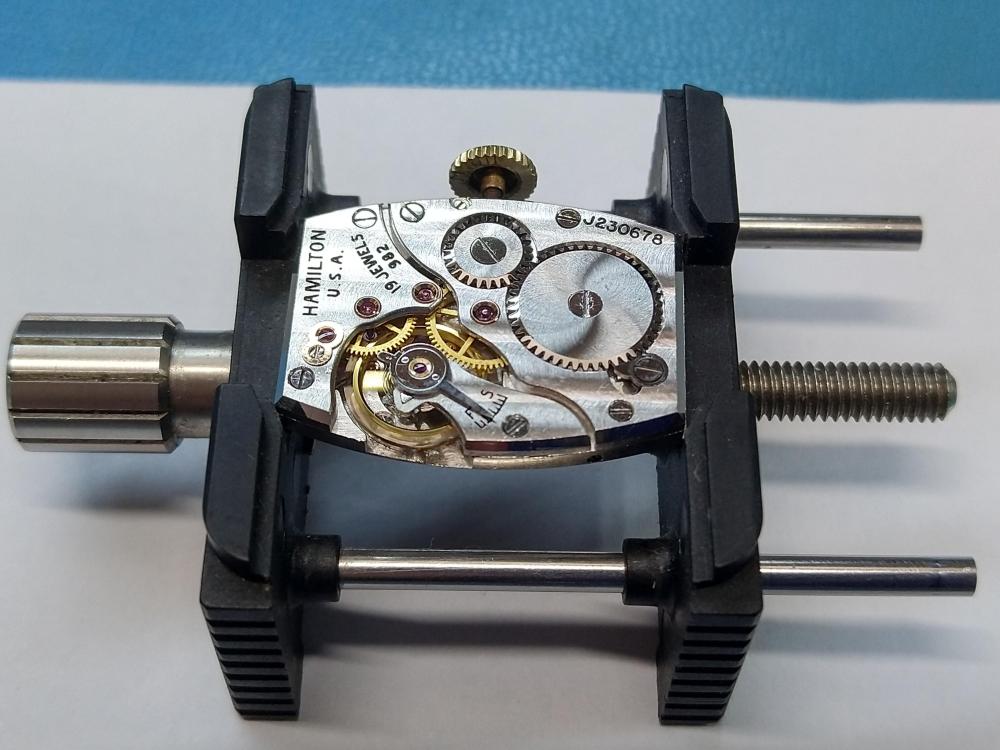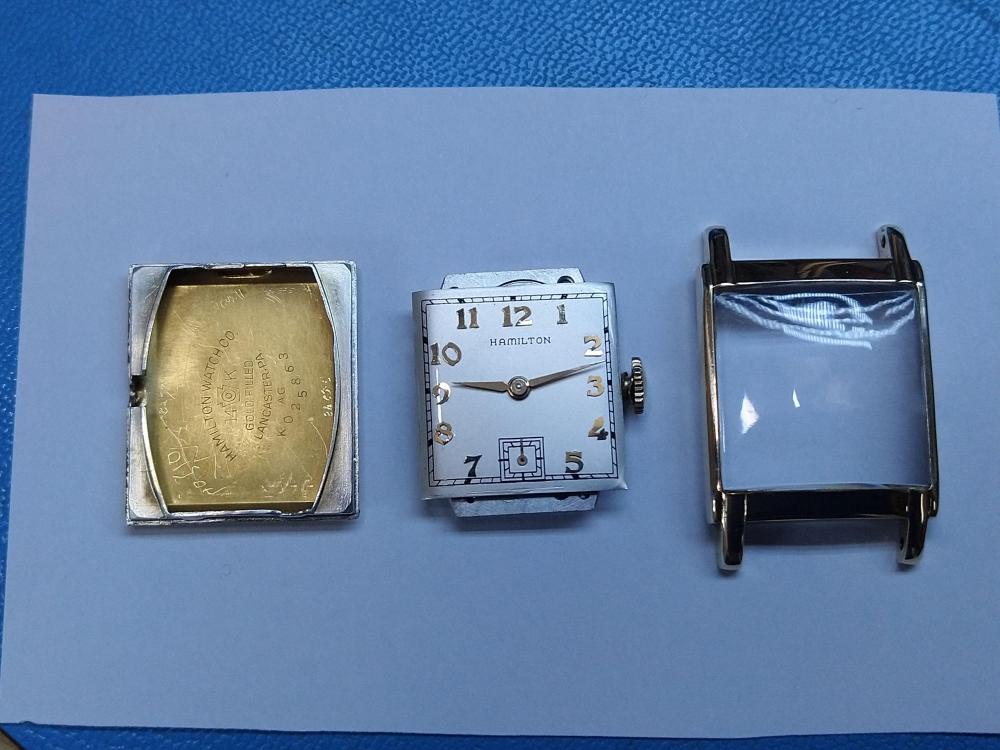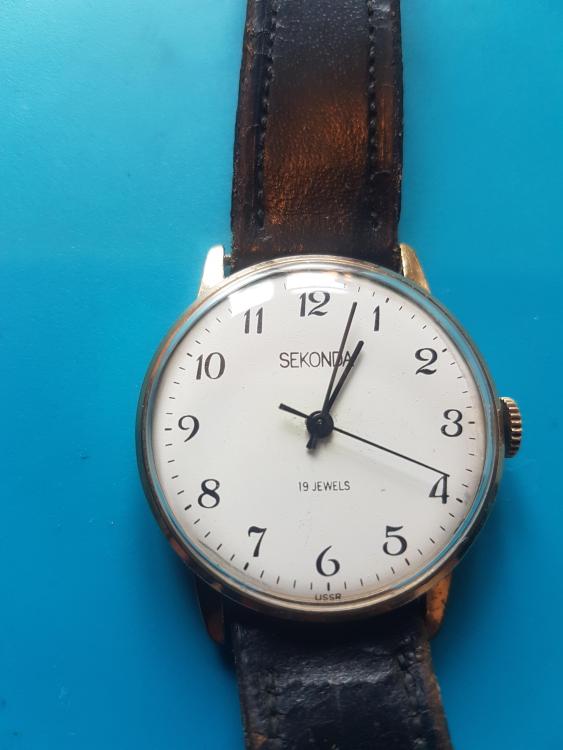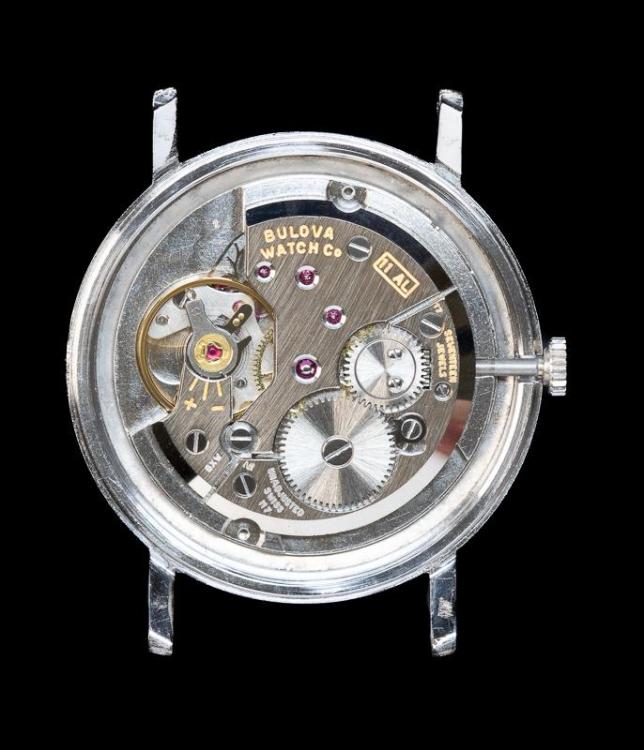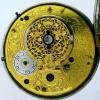Leaderboard
Popular Content
Showing content with the highest reputation on 01/27/25 in Posts
-
This is going to be a long one... First, You don't need to close the hole with domed punch, as this is a hole in narrow strip. There is no enough 'meat' on both sides near the hole, so this thin places will elongate, and the thinner one will elongate more thus bending the part. Buying tap and die and making the part is good point, but in this modern world the tools are made to sell them, but it is not sure that they will be able to do the job. My attempts to buy new dies once ended with conclusion that one has to make taps and dies by himself. Now, the watcmaker's die not always look like the normal ones. Often dies are used that are just like a nut made of hard steel. They don't have holes around with cutting edges formed. Actually, making thread there is not by cutting, but rather by moving metal. The rod that You need to make thread on is to be soft as possible and with a little smaller diameter than the thread. So if You need 0.8 thread, then use 0.75 rod. I will try to explain what to do and thus shorten the whole 'theory', then if needed, will explain more about what is needed. You get new stem with long piece of thread 0.9. May be several stems, as some may break in experiments. No mater what, just the thread part is needed. Then You harden the thread part and temper it just to 170 degr (just to beginning of appearance of slight srtaw color) to reduce it being so brittle, but keep it as hard as possible. Then You form by grinding a tap out of it. Will show pictures at the end. Then You use the tap to carefully cut new thread in the setting lever hole. Apply oil. If it doesn't cut, then anneal the lever, if needed resharpen the tap. You must cut good well looking thread. When done, You harden the lever and temper it to blue. Now You need to make a die. You need a flat piece (about 1mm) of soft tool steel. Drill a 0.8 hole, then cut thread in it with the tap. Then You make small champfer on one side like funnel, the other side grind flat, then repeat the thread with the tap to be sure it is clean. Harden the die the same manner as the tap. Now, You have to make new setting lever screw. The material needed is tool steel rod, soft (annealed) state. On the lathe, You begin with the threaded part. You turn cylindrical part with 0.85 diam, then form the thread by the die. Start with the champfered side. Use oil, go ahead slowly by forward-back rotations of the spindle by hand. If it doesn't want to go easy, then the rod is thick. Then it will break in the die and You will have to make new one. If the rod is thinner than needed, the thread will not be full sized. When the thread is ready and looks fine, turn the other side of the die and finish the thread to the end (to the shoulder). Then continue turning the screw, when ready, cut the slot with thin jeweler's saw. Harden the screw, then temper it to blue. Then You can polish the screw or at least the head that is seen on back side of the movement Of course, if You lathe can cut threads, You can make the tap needed and make new lever keeping the existing screw, but making the lever is for me the longer way6 points
-
3 points
-
First is the Pogue I posted in the watch of today and the second is a Willard. The Pogue had bent/stuck pushers and a broken pivot on the minute recording wheel. I also had to reinstall the intermediate recording wheel bushing into the chrono plate, lucky I noticed it on the bench and tucked it away until I figured out where it was supposed to reside. Also had to source a crown and indicator ring spring. The Willard is a 6105-8119 from 1973. Was very dirty ( caked in grime) and not running. Cleaned the case and got it running. I am going to get a new crystal, but it is otherwise all original and not touched. The screws are perfect and no watchmakers marks.2 points
-
Yes, the true formula is that you'd square each deviation, add them up, divide by the number of positions, then take the square root. It's just above 7 then. In my example: 10^2 + 5^2 + 0^2 + 5^2 + 10^2 = 250 Divide by 5 positions = 50 Square root of 50 = 7.07...2 points
-
a little more research of the mystery and mystery continues. I was looking at the national Association of watch and clock collector bulletin index for Swiss fake. There weren't any articles which I found strange but in their question section there were three articles or three questions and only one of mad anything really relevant. So I snipped out how you're supposed billets health is a Swiss fake. But it does bring up the problem again of this isn't a counterfeit or fake of a brand that we know of it appears to be a watch with its own name. so basically when you go through the list it's not clear cut for this watch. Like number two typically Swiss watches have two dial feet and this one has three like you would typically find on an American pocket watch. Number three is interesting in that they're telling us that at least the early Swiss watches were not mass-produced they were handmade which is why the scribe marks would be on the dial site. This watch looks to be mass made and since we have two watches are basically identical obviously they were made in a factory not laid out by hand. Number five the reference to the balance jewels made me go back and look and this watch definitely has strange balance jewels. Usually the American pocket watches would have two screws to hold the setting in this watch has zero screws? It almost gives the impression of this watch being later than whatever we think it is supposed to be.2 points
-
Getting the crystal back in without mullering the thin white gasket.1 point
-
It’s getting complimacated around here now with all this mafematiks, makes my head hurt Tom1 point
-
Just the weekly standard stuff, it could conceivably be automated, I hadn’t considered that tbh. Tom1 point
-
Thanks, I understand that. I just couldn't quote grasp what the person in the link was saying.1 point
-
You're definitely over-thinking it. The mean is just the normal average of the rates (e.g. 5 positions: -5, 0, +5, +10, +15. Sum it up: -5 + 0 + 5 + 10 + 15 = 25. Divide by number of positions: 25/5=5 is the mean rate). Standard deviation is the average deviation (always as a positive number) from the mean: -5 deviates by 10 from the mean of +5; 0 deviates by 5 from the mean of +5;.......; +15 deviates by 10 from the mean of +5. So, the average of those deviations is (10+5+0+5+10)/5=6. That's the standard deviation.1 point
-
Yes - they come up at auction, but pocket watch washers are less common than wristwatch ("bracelet" timing washers). The "good way" to remove weight is using a balance screw undercutter tool, which is like a set of tiny circular files that grind metal off the thread side of balance screw heads. The idea being it does not leave visible marks. Those tools are not expensive but have to be bought on ebay. The easier way is to just take a fine file to the bottom edge of the heavy screw. Removing just a miniscule amount of metal will cause meaningful poise changes. But that method leaves a file mark on the screw, and that goes against the modern watchmaker ethos of leaving no evidence behind of your repairs (except good performance). Some frown on this method.1 point
-
yes the famous ball watch company that never made their own watches. but in the early days when bowl was purchasing American pocket watches they were big in the railroad timekeeping. So anything they purchased would've been a 21 jewel railroad grade watch and typically they change the model numbers for ball. So occasionally end up with discussions on groups of which part should I use because the numbers different. that I'm going to go through the pictures backwards as I scroll up at the pictures. Mainspring I assume it's been changed because it does not look blue in color? The pallet fork looks very primitive. Plus it's for a single roller versus the newer double roller. the other thing of interest is it's not shiny it's not polished when was the last time you saw an American pocket watch with a non-polished pallet fork? It's always interesting things that they polishing finish that you can't see. then the center wheel does look like maybe it's a safety version. you usually don't see the threads on the shaft itself. bbut it does give the impression that the pinion is attached rather than being machined as one piece. then the balance jewels those are very strange. Everybody else is using screws for quite some time and hear a company has no screws at all. I don't think I've ever seen a name on a balance wheel. Typically it's the serial number either the full number of partial number. Then of course it would never be a ball balance wheel anyway. It's not shiny enough is not a double roller and it was definitely not made for railroad grade watch. So yes it is a very interesting watch with three dial feet which it would apply US-made. I suppose somebody gets to do a lot of research now like when did safety pinions exist and when did they go out of existence. Like the Waltham watch doesn't indicate that it has a safety pinion that this watch appears to resemble.Then jewels that are pressed in without screws they don't come until much later on and I think the references I have or basically wristwatches. Serial numbers on all the parts sets common when you're manufacturing everything together. then the other thing is when did 16 size pocket watches go out of focus? in yesterday's search for information on fake watches apparently Waltham was the most common counterfeited watch. But this watch isn't really made like a counterfeit. Yes it definitely looks like a low-end manufacturing plus newer manufacturing. But with the single roller would imply something more vintage. it's definitely a very strange watch with its mix of old and new. With vintage of American manufacturing like putting serial numbers on everything. But unfinished pallet fork bridge in the pressed in jewels. Just a weird mix of things and then was thinking about something? So it back to the pocket watch database and we get this Years of Operation: 1888-1956. So we have an extremely large company manufacturing pocket watch cases what if they acquired an American watch company. Normally starting up to produce your own watches was very expensive and very complicated but seeing as how sizable part of their business occurred after 1900. The reason I bring that up is I have a book reference down below which is really interesting. So he basically lists all of the American watch companies which of course I looked this company is not listed. in section 1 of the book he has something very interesting towards the bottom so they basically indicates an American watch companies entirely made their watches in America with only a few minor parts purchased elsewhere. Then the reference to some American companies purchased watches from other places but he does not consider them American. Which of course means they would not be in the book. Then he also brings up there were also a number of foreign companies which copied American watches and sold them as American products he considers these fake Americans. Also commenting that sometimes they went so far as to copy the American names and town on the watches. So he considers these fake Americans. But he also makes a reference at the very end that they make for a very interesting collection. Which is why was a bit bewildered by yesterday's search sudden find more information on fake American watches. So what if the pocket watch databases right that this an extremely large company making watch cases what if they acquired an American watch factory? But after 1900 because this book doesn't actually say when he researched in other words whether or American pocket watch is dying out? So they acquired a company that went out of business they conceivably would still manufactured the way the company originally manufactured then either purchasing or upgrading things like the pallet fork which looks pretty rough keeping the single roller because that's what the originally the company had and acquiring pressed in jewels that occur much much later in time. https://www.amazon.com/Almost-Everything-Wanted-American-Watches/dp/9996765547 one of things I'm wondering about is even though we have a mix of old and new I'd have to track down where my books on pocket watches I suppose it's possible that some company oh? I forgot we do have a time reference on the history of the pocketwatch database we find that the case company . Plus it was an extremely large company making a heck of a lot of cases so what if they acquired a watch company? Maybe they did make the watch. you look at most of the history of American pocket watches doesn't really cover the later history. So if they acquired a company making the watches like they once were made with serial numbers on everything but you have manufacturing or purchasing the pallet fork and1 point
-
Just open the message you sent OH, just below the subject it will tell you which of the recipients have read it and when. Tom1 point
-
That's now a respectable amplitude at least dial up/down. The drop to horizontal is concerning, though. It's difficult to compare your timegrapher traces to those I'm used to. But it looks a bit wavy now. Something a bit out of round? I'm not experienced in poising, but ai think you shouldn't waste your time building a static poising tool, but rather apply dynamic poising techniques. PS: haha, looks like @mbwatch@mbwatch and I were typing the same thing at the same time1 point
-
I will post them when I have it finished. Right now, I'm finishing up the lapping table setup for the lathe. Last night I got the lapping plates mounted to the lathe arbors. Just need to face them flat, and get the hardware for the pivoting table I made for the cross slide. Right now its all 3D printed, so I don't know how rigid it is going to be.1 point
-
1 point
-
So satisfying when it fit perfectly! I'm currently building a tool post holder for my flex tool, so I can mount a 3in grinding wheel to it to precision grind my tailstock runners. And also cut wheel teeth.1 point
-
Antique Longcase clocks are all weight driven. Some of these modern movements are manufactured westminster chime movements and spring driven and screwed into a case that resembles a Long case. They are not true Longcase clocks. What we have here is a modern Longcase case with a modern westminster chime movement weight driven. Americans refer to these clocks as Tall Clocks.1 point
-
Its a fine line between the two, but in terms of honing your machining skills, definitely brilliance.1 point
-
A week ago I messaged Mark again and I have had no reply. I'm sick and tired of this. I want to step down as a Mod and let some other member have a turn. I suggest you Mods try and sort it out. I'm sorry but what else can I do. For Mark to completely ignore my messages is just bloody ignorant.1 point
-
1 point
-
1 point
-
That sounds really good! Save the ordered mainspring for another day and use the original spring instead. Modern mainsprings last "forever" so you don't have to worry about it being worn. As long as it's not damaged it should be good. Worst case scenario it may give you an hour or two less of power reserve than a brand new original spring but it won't affect amplitude much, if at all.1 point
-
1 point
-
Updating on the Standard 96-4 I have on the bench. I bought a rusty donor movement off the auction site and took the chaton off it. Night are getting the end stone off the cap but in the end some rodico whilst holding it did the trick. Super small getting some oil on the stone but I find my heavier steel tweezers are better at holding the small stones with less risk of them pinging. All back in and the movement kicked right in to gear, which is promising. Haven’t put it on the timegrapher yet but I’m hopeful for some good numbers. I also bought a replacement click spring, but also bought some spring steel in 0.2mm and today I had a go at making a spring. I was able to fashion a really good looking and functional spring. However there was a fatal flaw… 0.2mm is too think and it fouls the ratchet wheel. It’s unfortunate as I can’t easily source music wire in anything smaller than 0.2mm and my guess is I’d need 1.0 to 1.5mm. So that part is on hold now until the replacement part arrives. The NH35 continues to work great on the arm. I need to speed it up a bit after wearing it for a while as it’s losing about 50 seconds over a week but that’s an easy job with the timegrapher.1 point
-
This watch was my first automatic watch I bought around 8 years ago and I still love it so of course it holds some sentimental value and I intend of keeping it. Since I bumped into your "how to" thread I said I might give it a go and service it myself, after I did some training on some chinese seagull ST36. I already placed an order for the DiaFix springs and the main spring thanks to @AndyGSifor pointing me to the right shop. Exiting times1 point
-
I'd said 0.8mm as that's what you'd mentioned in an earlier post but it depends if the problem is the screw or the lever? Assorted setting lever screws are also available but not the cheapest option without knowing if there are any larger screw anyway. These only go to 0.85mm which may just re-tap themselves into the lever.1 point
-
I'm following this thread and still don't get notifications when new posts have been added. That's a first That's true, but many vintage wristwatches often hold sentimental value, and for the owner, that value can sometimes be on par with luxury watches. This creates a strong incentive to service and repair them. Often, though not always, the owner wishes to preserve the original movement, even though it would, when possible, be cheaper to replace it entirely. I understand that it might feel difficult for emotional reasons, but just as many of us believe that politics and sports don’t mix, I feel the same way about politics and watches. Yes, I recommend Russian wristwatches/movements (Vostok, Poljot, Raketa, etc.) for those new to servicing and repair. They are very affordable, and unique in their appearance, yet have the same basic construction as any Swiss movement. I’m particularly fond of Vostok’s calibres 2409 and 2414, which are manual, as well as 2415 and 2416, which are automatic. All of them are constructed in essentially the same way, with minor variations. An interesting variation of calibre 2416 is calibre 2431, which is a 24-hour movement. Here is my service walkthrough of calibre 2431 if you'd like to see some pictures, and here is my service walkthrough of calibre 2409 (completely without complications). On eBay, you can find countless used Vostok wristwatches, and it’s not uncommon to find an entire lot of used movements for very little money. It’s not possible to replace the original mainspring with a Swiss replacement spring, something I discovered after completing the service. The problem is that the bridle on the Swiss mainspring is thinner than on the original spring, which causes the spring to slip far too early. This, in turn, significantly reduces the power reserve. I recommend using the original mainspring. Here is a very interesting video on the subject. There’s a good chance they might fit, and it’s worth a try, but there’s no guarantee. There are differences between Orient and Seiko movements, but hopefully, they use the same Diafix springs.1 point
-
1 point
-
Thats fair enough if you dont want to modify the movement, but you only need to widen the hole in the plate, for the bridge...the screw head can be reduced. So that just leaves the option of plugging the hole in order to re-machine a new thread or make a complete new setting lever. Or source another.1 point
-
It isn’t a proper repair, but one way of getting a watch screw to bite in a stripped hole is to insert a very fine piece of copper or brass wire, to fill the hole slightly and then the screw should bite. The technique has the advantage of being reversible, so you can perform a more robust repair in the future. When there isn’t much metal to plug or bush a hole for a screw, you can open out the hole from the inside with a tapered reamer, with the larger end on the inside. That way, when the plug is drilled and tapped, the screw will pull the plug deeper against the taper. If this is carefully done, nothing would show on the upper surface. It is difficult to judge whether there is enough metal thickness for this technique to work in this instance, but it’s worth considering. You could also silver solder the plug in place if you have access to a fine enough torch, that will apply sufficient heat to the small area where you need it. I hope this helps, Mark1 point
-
1 point
-
Casing the movement. While the components of a watch movement almost always fit together perfectly, it is far from certain that one can expect the same precision between the movement and the case. Also, getting the movement out of the case can sometimes require a lot of research. You think it should be quick and easy, but no.1 point
-
The one on the left is a hand remove although it appears to be slightly broken. The central plunger piece should be attached to the two things protruding just above each of the lever blades at the end of the arms. To use it you actuate the plunger until the ends of the blades are parallel with the dial and a slight gap between them. You then position the canon pinion in the gap so the blades are between the dial and hands and push down on the whole tool. This forces the arms to rotate and the blade ends to tilt upwards against the hands sliding them off the movement. They're ok to use but I almost always use standard levers over that type. Excuse the crude drawing but I'm not a great artist!1 point
-
1 point
-
After confirming that the free oscillation test was still good with the pallet bridge in place I readjusted the position of the impulse jewel until it was pretty nearly exactly in line with the pivots then put the pallet in and reinstalled the balance. I'm getting over 300º amplitude in horizontal positions, but still getting around 2.5 ms beat error. Inspecting visually, I think the end of the overcoil, where it bends down to join the rest of the spring, is still brushing the underside of the balance cock so that I have a slight asymmetry between the anticlockwise swing (which moves this away from the cock) and the clockwise swing (which moves it towards and under the cock). It isn't apparent on a free oscillation test because the overcoil only goes under the cock when the amplitude is large enough so starting with 180º results in it approaching the cock for only the first few oscillations. On the TG-TIMER software it also looks like it has perhaps 10 or 15 degrees more amplitude in one direction than the other which is consistent with the hairspring touching the cock in only one direction. I think I'll leave it for a few days, probably until next weekend, then I'll give the hairspring another tiny twist to try to get the overcoil sitting a few hundredths of a mm lower so it properly clears the cock. Which will, of course, necessitate re-checking that the impulse jewel is still central, and possibly tweaking the collet again. So it goes.1 point
-
I'm not sure if I posted this one before but I recently serviced it and was able to get a crystal that fit. I had an issue finding one that was both the correct size and was an 'underlay' type but found one on Cousins. This one fits although the corners are more rounded than the original. The watch came as part of a watchmakers estate and was labelled as an AS970, which it is also marked on the dial side of the mainplate. These seem to be few and far between with the vast majority of AS970's having a sub-seconds hand.1 point
-
1 point
-
HWGIKE#37 Hamilton 982 Full service, acceptable performance. Amplitude 265 fully wound, beat error 0.2 ms. Had to use the old MS because the one I ordered came damaged, dirty and even rusty and I would not expect a better replacement. Broke the escape wheel when I first tried to get the movement out from its basket... that little hole seemed to be a nice place to put my screwdriver in.... Bought a donor half a year later. I had to replace the screw for the escape wheel top jewel plate dial side... meaning that i had to find a candidate and file it down to size... luckily i am using a microscope... I still don't understand how could they handle these tiny parts in the past without modern technology...1 point
-
Yes, I did turn on centers. The fit is near perfect. When removing the bit, a small vacuum is pulled and then, pop. This was more of an experiment than addressing a need...so far1 point
-
1 point
-
I have a taig, which is the cheaper version of a sherline. I also made a tailstock runner. Its best to turn it between centers to get it concentric. As far as a set screw, I would go with a different approach, as any lateral input on the drill bit will shift it slightly and move it out of center. The best option is to turn a bunch of brass sockets for all the bits you have, turn a taper on the end that will go into the tailstock runner, and shellac the drill bit in the socket. Since you already have experience making a runner, you can make another one with an internal taper that matches the external taper you put on the brass sockets.1 point
-
1 point
-
https://www.aliexpress.com/item/1005007130769712.html?spm=a2g0o.home.pcJustForYou.26.650c76dbsQ3KF2&gps-id=pcJustForYou&scm=1007.13562.416251.0&scm_id=1007.13562.416251.0&scm-url=1007.13562.416251.0&pvid=7d3d8ae1-630c-4aa4-b3ab-660351cbc021&_t=gps-id:pcJustForYou,scm-url:1007.13562.416251.0,pvid:7d3d8ae1-630c-4aa4-b3ab-660351cbc021,tpp_buckets:668%232846%238115%232000&pdp_npi=4%40dis!GBP!7.91!2.69!!!70.56!23.99!%40211b804117328967840712061e47a9!12000039506409461!rec!UK!2690227082!XZ&utparam-url=scene%3ApcJustForYou|query_from%3A The algorithm knows too much. This is AliExpress's latest suggestion for me. I have no affiliation whatsoever with this seller, but I thought these T shirts might amuse one or two of you.1 point
-
Introduction This service walkthrough is not a tutorial on how to service a watch movement. I made it for myself because I think it's fun and because it will make it easier the next time I service a Vostok 2431. I also think it feels nice to be able to share this walkthrough considering all the valuable information that many very talented members on WRT freely share. Many, many thanks! There is a lot to learn when servicing a watch movement that is not covered in this walkthrough. Therefore, I recommend, for example, watchfix.com, learnwatchmaking.com, or timezonewatchschool.com. I feel like I got the most bang for my buck at watchfix.com (I'm not sponsored in any way) but I've also had a lot of fun and benefited from the other online schools. Links to photos on my OneDrive Vostok calibre 2431 disassembly walkthrough. Please sort the images by name in ascending order. Vostok calibre 2431 assembly walkthrough. Please sort the images by name in ascending order. Curiosities I think it was in 2014 or possibly 2015 that I bought my Sturmanskie Open Space. I had just discovered that there were watches where the hour hand only rotates one revolution per day and at that time I knew absolutely nothing about watch movements, service and repair. The idea that the hour hand of a watch only rotates one revolution per day seemed not only completely logical but also different and fascinating. The earth rotates one revolution around its axis per day, so it should be obvious that the hour hands of our watches do so too. The fact that the letters on the watch were also Cyrillic did not make the whole thing any less exciting. I just couldn’t resist it and I’m happy I didn’t! Vostok claims that their movements only need a service every 10 years, and I think that's true because the tolerances are pretty rough and therefore large amounts of dirt are needed to stop a Russian movement or even cause it to run badly. It has been said that the amount of dirt required to stop a Vostok movement is enough to stop a hundred Patek Philippe movements However, the price for this endurance is a movement that doesn't come close to the precision offered by high-quality Swiss and Japanese movements, but it's still quite easy to get these Russian movements to run accurately as long as they're worn and used consistently. About the movement Russian watch brands such as Vostok, Raketa, and Poljot, to name a few, are known for using their in-house movements, but not this Sturmanskie which is instead powered by a Vostok calibre 2431, which is a 24-hour movement. However, it is not a true 24-hour movement. That is, the movement is not originally designed as a 24-hour movement. Instead, Vostok has modified the movement in its calibre 2416B so that the hour hand only rotates one revolution per day. Calibre 2431 is otherwise identical to Vostok automatic calibres 2416B and 2415. The motion work(/dial train) in Vostok 2431 The way that Vostok modified the movement so that the hour hand only rotates one revolution per day is by modifying a) the minute wheel, b) the bearing for the minute wheel in the main plate, and c), adding an intermediate date indicator wheel. The minute wheel has been modified so that it has two pinions that lie on top of each other. The lower pinion drives what I call the first intermediate date indicator wheel while the upper pinion drives the hour wheel and has been adjusted so that the hour wheel only rotates one revolution per day. The number of teeth on the hour wheel itself may have also been adapted, but this is not something that I have investigated. Normally the minute wheel is mounted on a regular metal post on the main plate, but in this case, Vostok has replaced the post with a beefy, jewelled bearing. I assume that this has been necessary to get the minute wheel, with its two pinions on top of each other, to rotate sufficiently smoothly and stably. The added first intermediate date indicator wheel drives the second intermediate date indicator wheel which is part of Vostok's regular (non-modified) calendar complication. And this is what it looks like with the hour wheel mounted. Cleaning I have found that it is all too easy to underestimate the importance of cleanliness when servicing a movement, perhaps because the parts are microscopic and therefore it takes time to get used to thinking microscopically, even though I have been doing this now for five years. Cleaning of pinions and pivots A type of watch movement part that is particularly important but also difficult to get completely clean is pinions, but @nickelsilver advised me quite recently that in its pre-cleaning you can dip and rub the pinions in pith wood that you have impregnated with an effective degreasing agent, for example, Horosolv. I've done it several times now and it works amazingly well. Speaking of pinions, independent American watchmaker Josh Shapiro mentioned in a podcast that he considered pinions to be the most difficult part of a watch movement to make perfectly. Whether it's true or not I don't know but I think it's likely. To get the pivots clinically clean, I have also started using EVEFLEX, but you have to be careful because the material has an abrasive effect. It is important to choose the right polisher and to be careful. I have summarized my experiences with EVEFLEX in this post and I mention it because EVEFLEX is easy and quick to work with and gives me very good results. End-shake If there's one thing I've learned this time around, it is that a Russian movement cannot be converted to a Swiss movement because the tolerances in Russian movements are generally much coarser. Experimentally, I adjusted the end-shake to 2/100mm on everything from the pallet fork to the centre wheel, with the result that the amplitude and rate became extremely erratic. I created a thread about this: "Can end-shake and or side-shake ever be too small?" As you will see if you follow the thread, once again @nickelsilver, @Shane, and @JohnR725came to my rescue. Many thanks! My recommendation is to let the end-shake be slightly wider on Russian movements. After I increased the end-shake to approx. 4/100 mm, the amplitude and rate returned to typical, i.e., still somewhat irregular but perfectly normal for a Russian movement. Side-shake In this video, Kalle Slaap from Chronoglide shows an amazingly simple and effective way to determine if the side shake is correct. Since there was a crack in the third wheel jewel in the train wheel bridge, I replaced it, and when I then used Kalle Slaap's method, I could clearly see the 3rd wheel pivot jumping back and forth in the jewel hole. So, I replaced the jewel with a hole that was 1/100mm smaller and the visual difference, just changing it by 1/100 mm, was nothing less than dramatic. I am incredibly happy that I got to learn this simple and exceptionally clear method. Many thanks to Kalle Slaap at Chronoglide! Vostok reverser wheels If you Google “Vostok reverser wheels”, there is a lot of whining going on. I don't think there are any major problems with Vostok's reverser wheels, but they are unfortunately easy to damage during service or modification of the movement, and I think that is the real reason for the whining. Next to Seiko watches, Vostok watches are immensely popular to modify in terms of dials and hands, and in addition, many people want to fix the seconds hand that sometimes stutters on these movements. The latter is done by bending the second-hand pinion spring illustrated in this thread. To make these modifications, the oscillating weight/rotor must be removed and when it is to be screwed back on, it is easy for the rotor pinion to end up on top of the teeth of the reverser wheels. If you tighten the rotor screw in that position, even just a little, the reverser wheels will inevitably be damaged. The result is that the automatic winding stops working or only works intermittently. An easy way to check if the reverser wheels are working as they should is to manually rotate the oscillating weight alternately about 20 degrees in both directions with a piece of peg wood while looking at the 1st reduction wheel which is large and easy to see. If the 1st reduction wheel continuously rotates in the same direction (counterclockwise, if I remember correctly), no matter which way you rotate the oscillating weight, you can be sure that the reverser wheels are working as they should. If, on the other hand, the 1st reduction wheel rotates alternately in both directions when you rotate the oscillating weight alternately, then you can be sure that the reverser wheels are damaged and need to be replaced. Servicing the automatic mainspring I find it difficult to service the mainspring on automatic movements. It is, in my opinion, a construction that leaves room for improvement and that is why I generally prefer manually wound movements. If the mainspring in an automatic movement slips too soon, it reduces the amplitude and the power reserve, and if the mainspring slips too late, there is the risk of re-banking and that the movement runs much too fast when you are physically active, especially when you take a brisk walk swinging your arms, and the oscillating weight rotates constantly. The effect is like continuously turning the crown of a manual movement with high pressure when the mainspring is already fully wound. Not good! What I learned this time anyway, long story short is that you can be quite generous with braking grease on the rim on the inside of the mainspring barrel. Even if some of the braking grease ends up where it really shouldn't be, I don't think it will destroy or affect anything negatively. Also, and again from Kalle Slaap at Chronoglide, I learned that you should press at the end of the spring at the bridle when it is mounted in a spacer, and you are about to push it into the mainspring barrel. In this way, the rest of the spring automatically follows down into the mainspring barrel. You can see it in this clip. Very smooth, especially in combination with my highly rated Master Craft mainspring winder which I wrote about in this post. Lubrication of cap jewels For a long time, I have had trouble getting the oil to stay in the centre of the cap jewels and not flow out after I oiled them and installed them, despite treating them with epilame (Fixodrop). I think it's because (and now I'm going by gut feeling) that I previously always installed the shock assembly in the main plate before installing the balance and that I didn't treat the jewel housing (chaton) with epilame. After several failures in servicing this movement, I decided to treat both the cap jewels and jewel housings with epilame and mount the shock assembly after having replaced the balance. It did the trick and also made fitting the three-legged anti-shock spring much easier. My theory is that the balance staff pivots stabilize the oil in the centre of the cap jewels when the jewel housing (chaton) is dropped into place, and better hold the jewel housing in place, which will otherwise slide around while installing the three-legged anti-shock springs. Have I just written the longest post in the history of WRT? Anyway, hope you enjoyed it!1 point
-
I put the balance in a jar (upper pivot down, roller table up) then pour lighter fluid or IPA in the jar( fill so fluid levels with the roller and wont reach the shellac and impulse jewel) clsoe the lid tight and let the fluid clean the H/ S for hours. neither fluid damage the shelac if in contact for a few seconds so I occasionally swirls the jar.1 point
-
Thanks Cad, I had a good read through, I like the lifetime guarantee, I noticed that the balance was moving freely when I was looking at the movement and it gave me hope that it was savable (if that is a word - perhaps salvageable is better - no I like them both). The Elgin Wristwatch info available is quite extensive and the PDF attached was of use to me and may help others. Elgin Case Parts.pdf Cheers, Vic1 point


.thumb.jpg.cb17a66989f1e796fd4217db2e9ca9df.jpg)
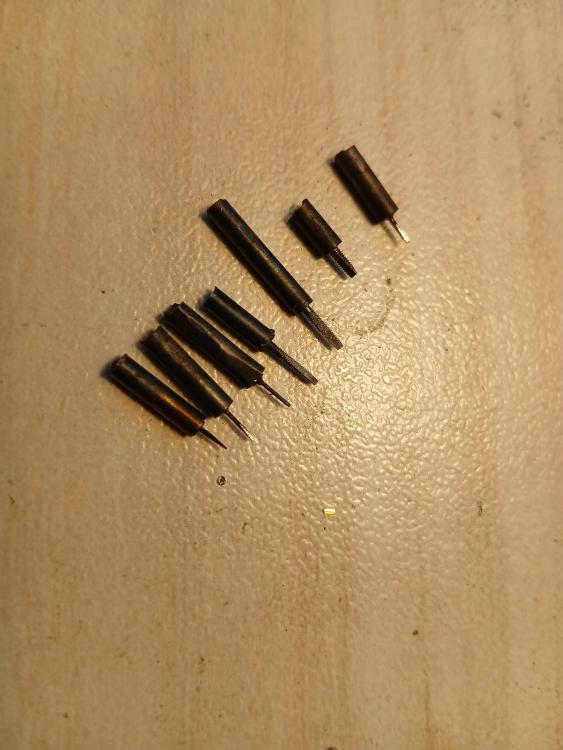
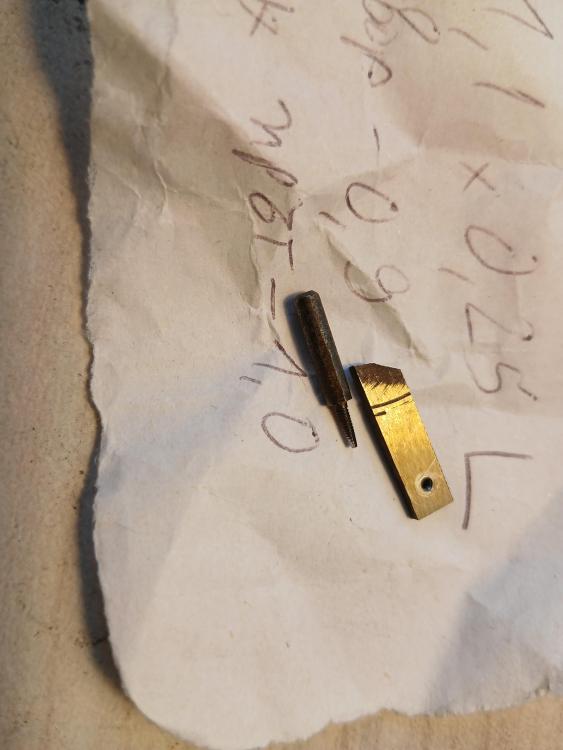
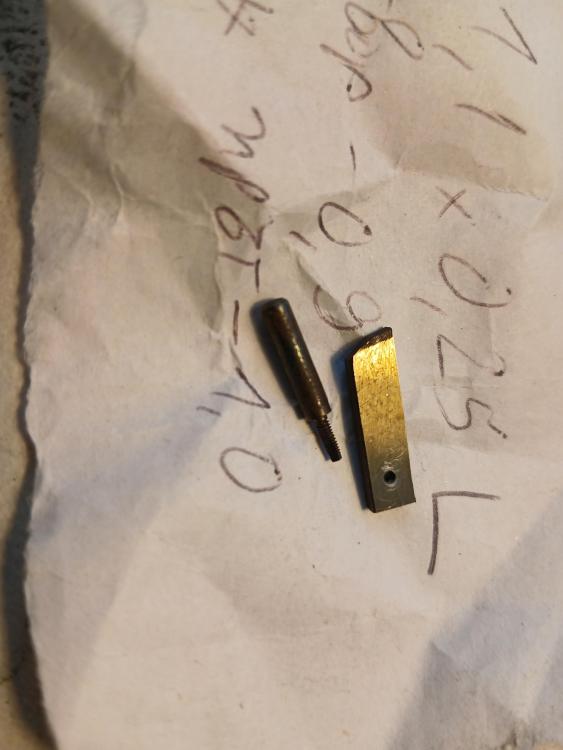
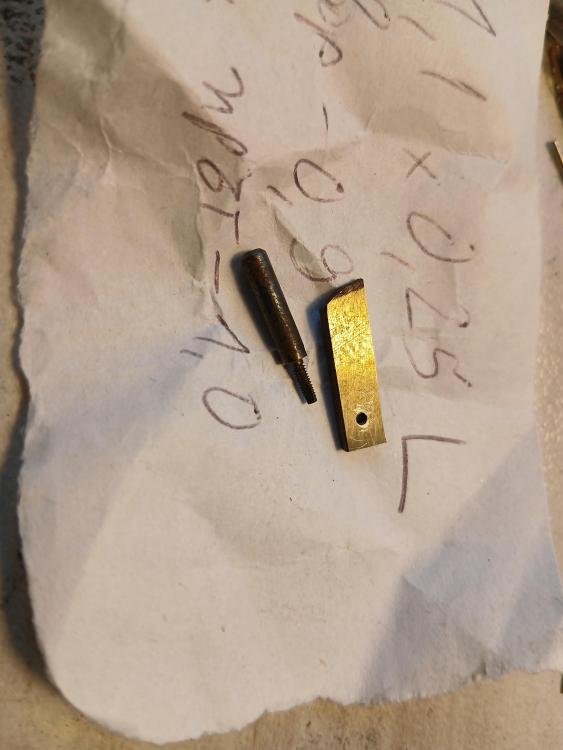
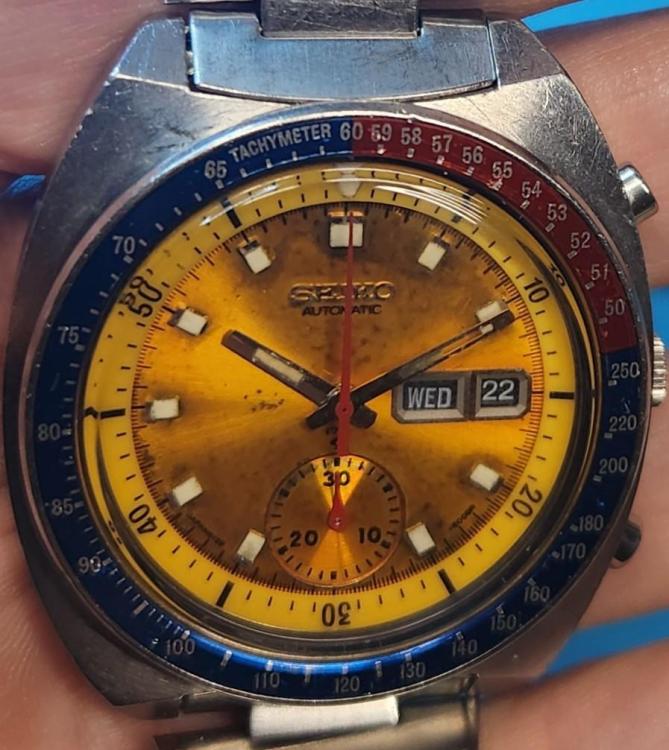
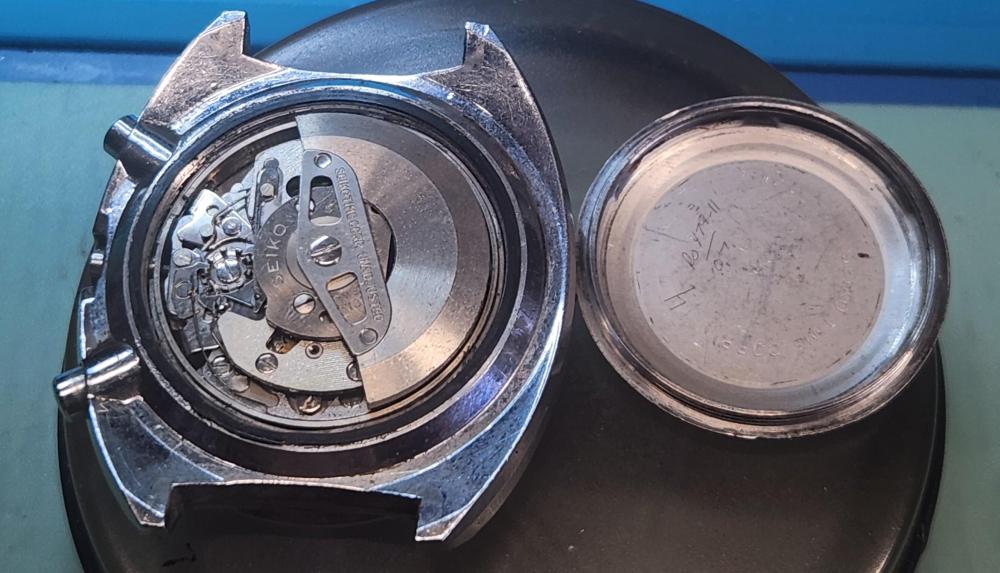
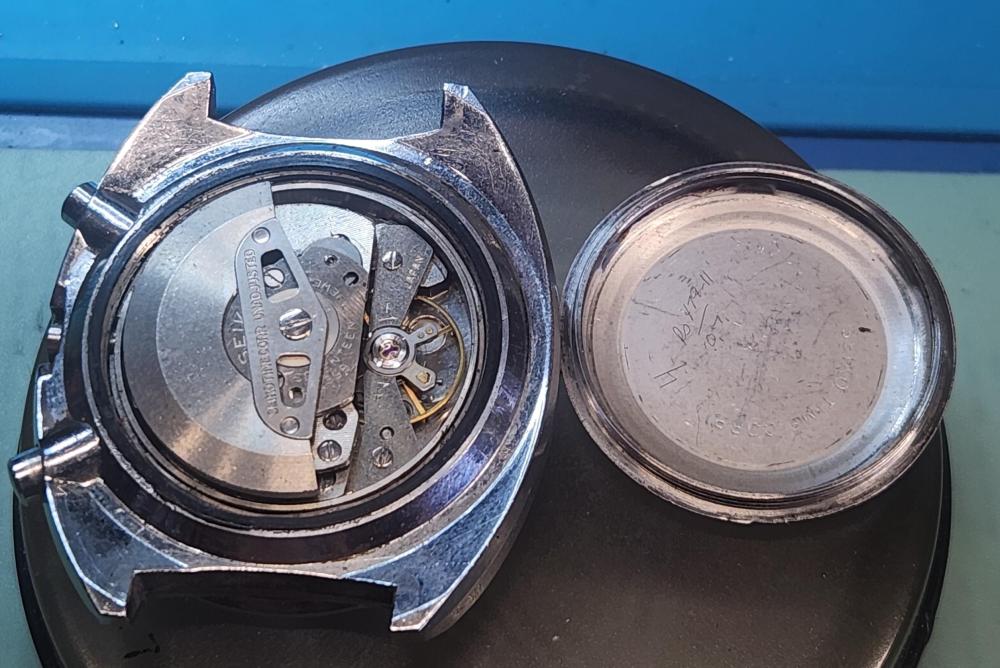
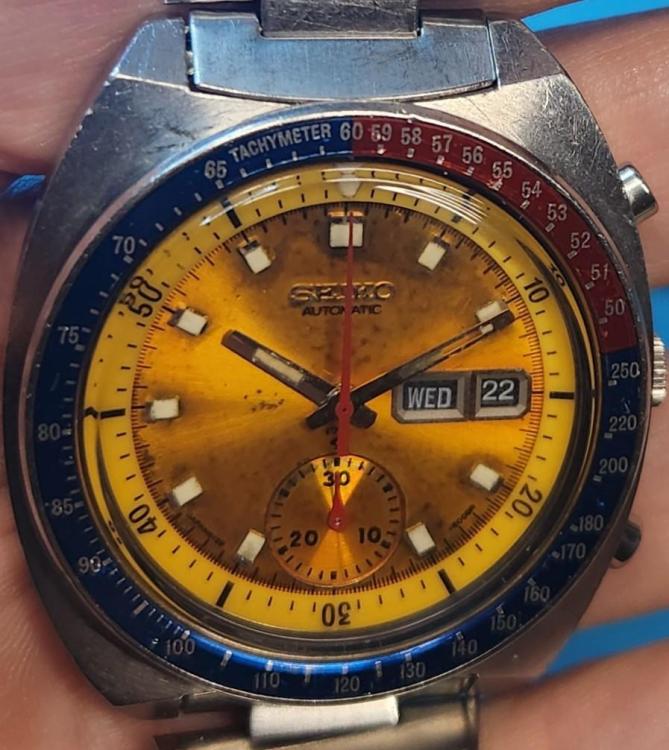
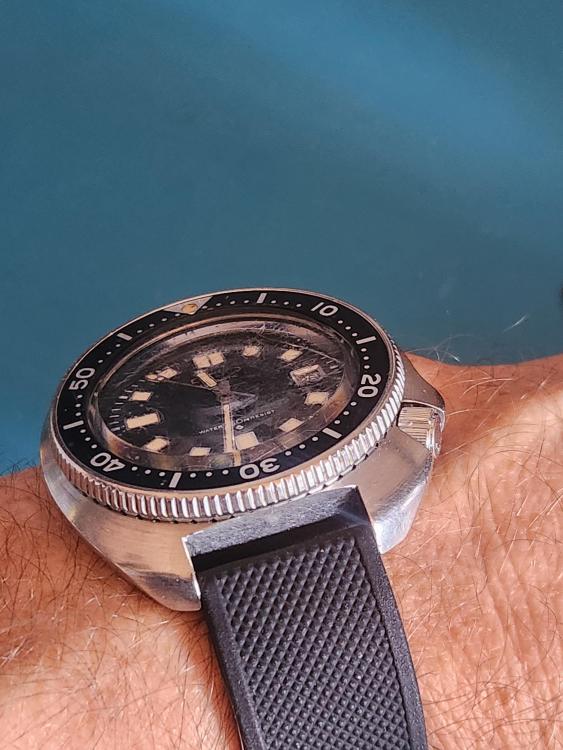
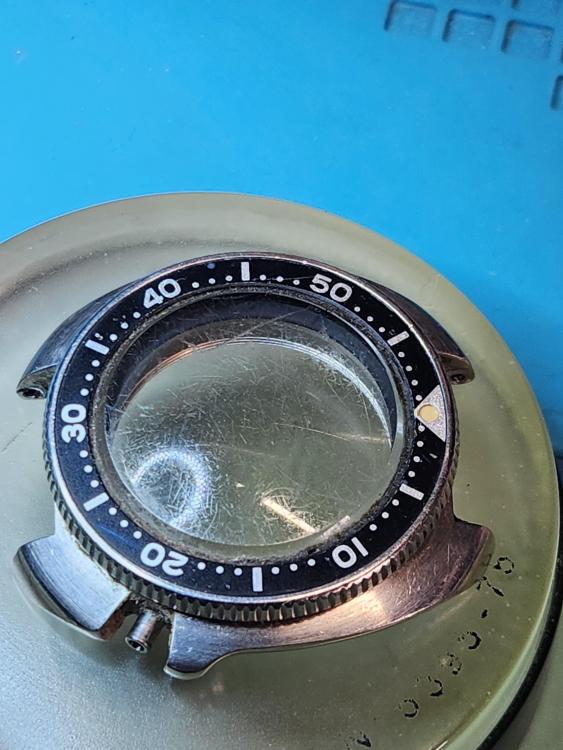
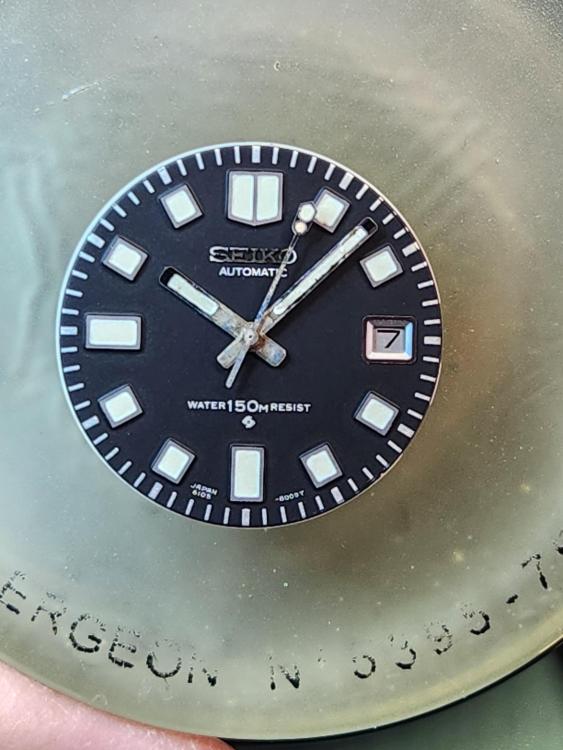
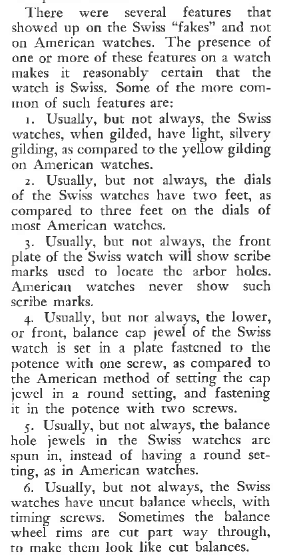


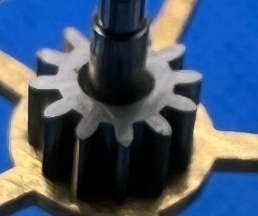




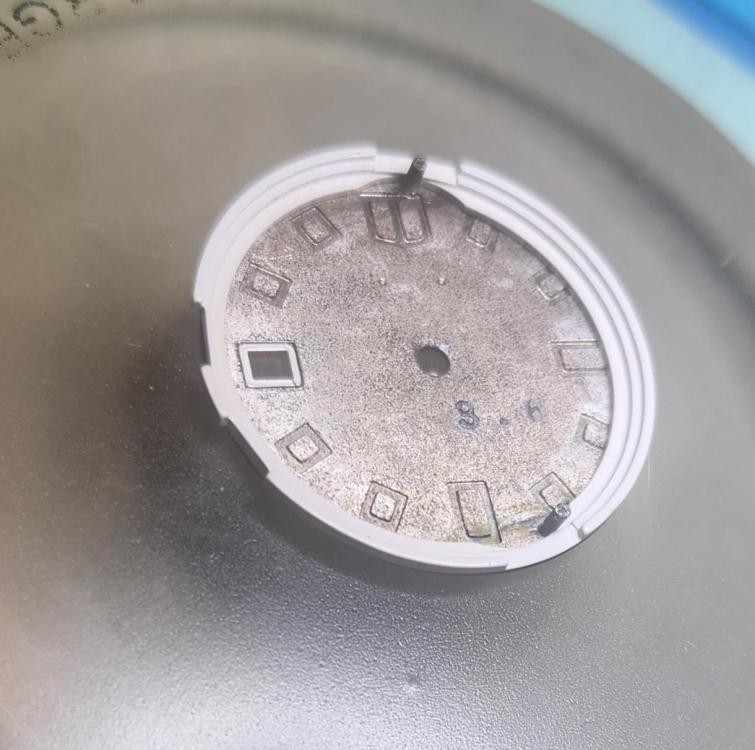
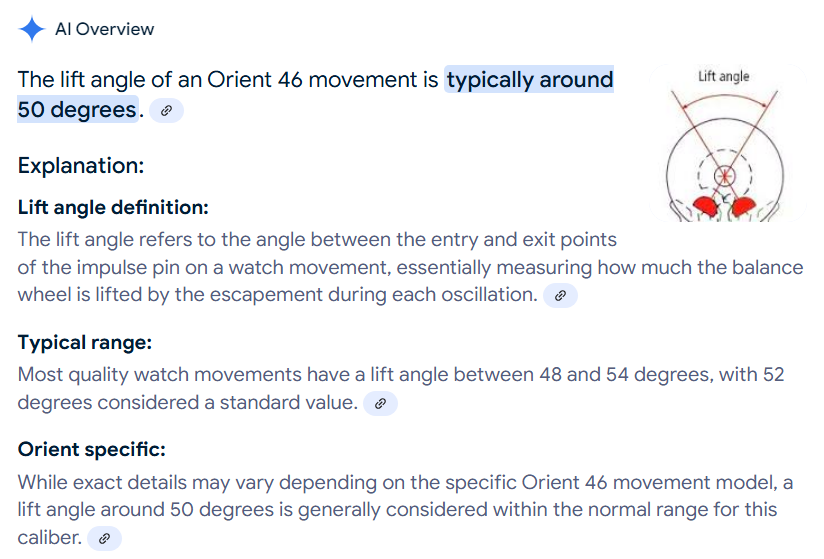




.thumb.jpg.19a9c4ff164d78d516aa9f05a063752b.jpg)

